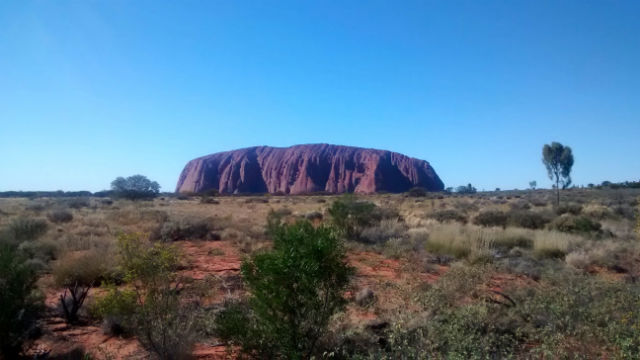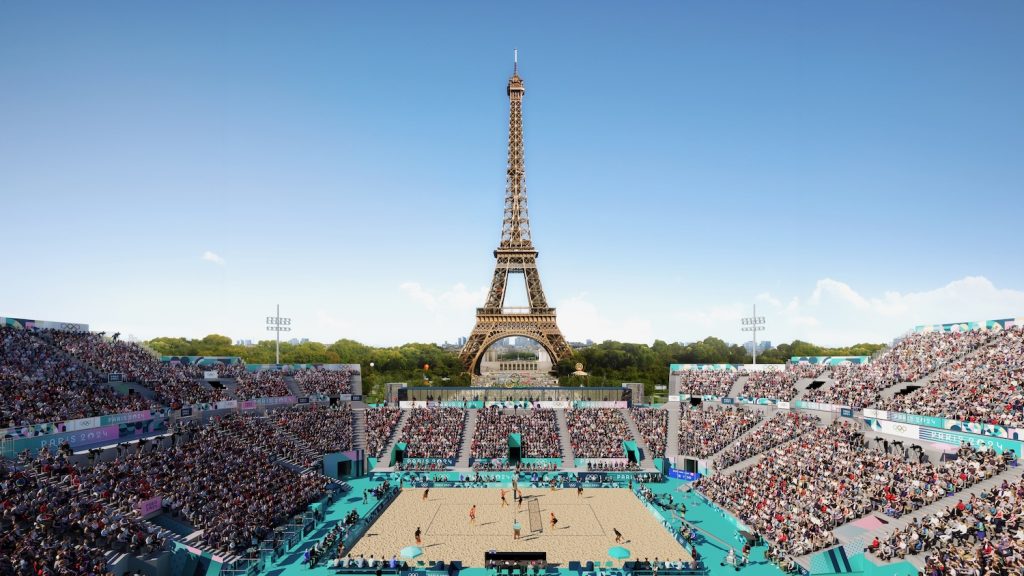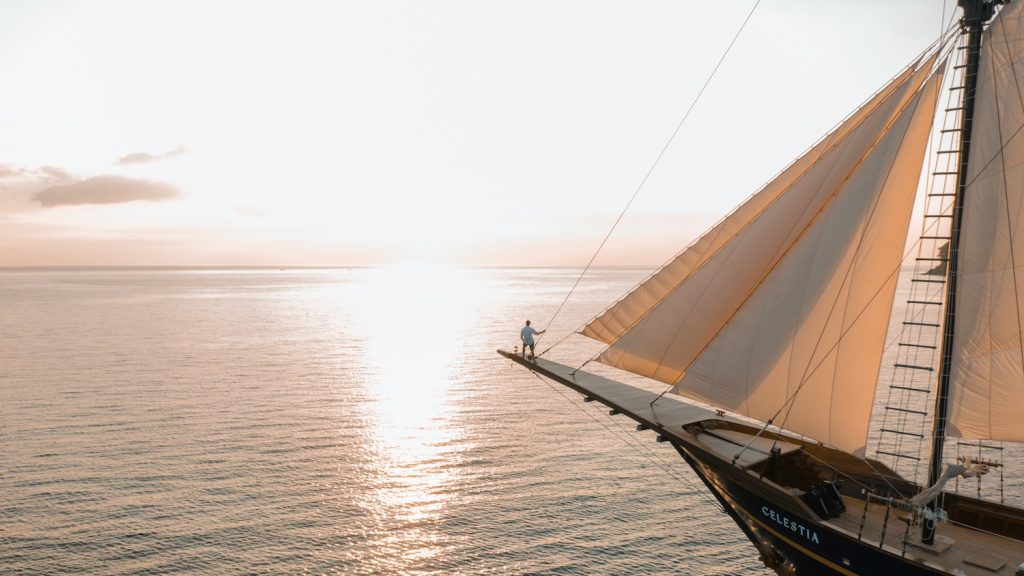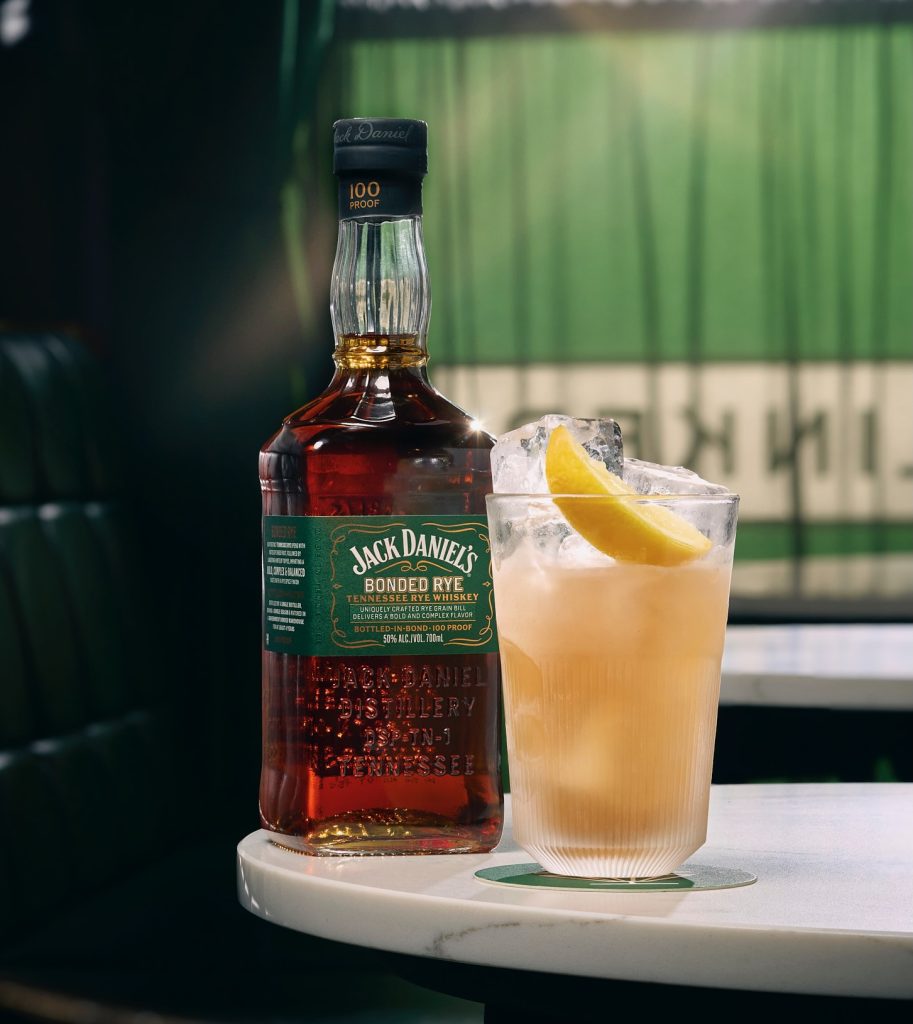They call the Northern Territory Australia’s Outback and this is certainly a good description. Home to crocs, thousands of years of Aboriginal culture, desert, camels, cattle stations, extremely good food and not to mention some seriously good accommodation, this is the ‘real’ Australia that you won’t find in Melbourne or Sydney.
Ross from TLE has just spent two weeks exploring this amazing destination to learn more about what it has to offer the adventurous luxury traveller.
Where Is It?
Slap bang in the middle of Australia, it covers a space of 1.4million km² and is split into two areas:
1) The Top End, which is home to Darwin and Kakadu National Park. The top has more of a tropical climate; warm and hot during the day which continues through the night. It is full of lush vegetation and is home to billabongs, lakes, gorges and those infamous crocodiles!
2) And the bottom end, which is the desert. Warm and hot during the day and cold at night, this is home to Alice Springs and Uluru (Ayers Rock).
What do you need to know about the NT?
The Northern Territory has two distinct seasons per year, the dry season and the wet season. The dry season (May to October) is the best time to visit as it is warm and easy to get about. During the wet season the temperature soars as does the humidity and the top end of the territory floods (up to as much as 5 meters increase in some areas), which makes visiting some areas impossible and also unsafe as crocodiles can easily move about. Many tourist attractions and hotels are seasonal so closed for that part of the year too.
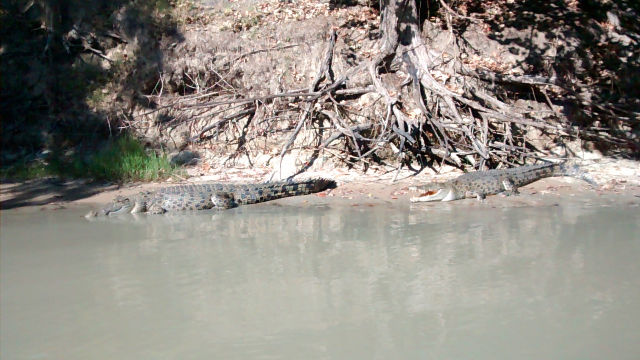
On the subject of crocodiles there are hundreds of thousands in the top end, they come in two forms; fresh-water and salt-water. Fresh water are the smaller variety and not a huge threat to humans (though they can bite you!). It is the salt-water ones you need to keep away from. Most waterways in the top end have crocodiles so swimming is off limits including the sea, even though it does look so tempting. There are some gorges and plunge pools where you can swim and they are crocodile free in the dry season but if there is a sign up warning you about crocodile safety do take it seriously.
Aboriginal culture is a huge part of the NT’s DNA, from the sacred Uluru and Kata Tjuta national park to the private area of Arnham Land in the north and Kakadu National Park, the NT is a world heritage destination and after visiting you will come away with a much deeper understand of Aboriginal life and its values.
Food and Drink
I go into this in a later article, but the Northern Territory could be named Australia’s larder. The top end is where much of the food growing takes place, it is no good for wine, but it is perfect for fruit and vegetables. With its close proximity to Asia it has taken on many Asian food influences (especially in Darwin) and there are numerous markets and restaurants selling outstanding food and drink.
Croc, Emu and Kangaroo also feature on many menu’s and they all get the big thumbs up. And for non-meat eaters, which I am, they have embraced this with open arms and access to good vegetarian food is no problem across the whole territory.
Getting Around
Australia is a vast and expansive country and this is especially pronounced in the NT where one place to the next is hundreds of kilometres apart. Depending on how much time you have (10 days is really about the minimum length you need to get a good flavour of the top and bottom end) you should break your trip into two; explore the top end by car or organised tour and then fly down to Alice springs and again explore that either by car or organised tour. .
Where To Stay and What To Do
As I mentioned before the territory is split roughly in two (top and bottom) so it makes sense to explore them in this article like that too.
Top End: Darwin, Litchfield & Kakadu National Park
You need about 3-4 days to explore this place properly and people tend to do it in a three stage triangle. I would start your trip in Darwin and take a day or so to explore properly. If your trip lands on a Sunday or Thursday you are in for a treat as Mindle Beach Sunset Market is on in the evenings, located down at Mindle beach about 2km from Darwin.. This is a foodies dream. Make sure you try the fresh oysters and outstanding Asian food and finish off with a cake from one of the amazing desert vans (trust me the cake is orgasmic) and this is all set against the backdrop of the sun setting on Mindle Beach.
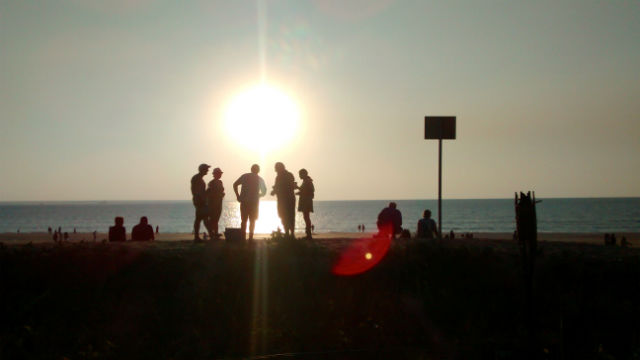
Darwin is also home to Hanuman restaurant an award winning fusion restaurant run by Jimmy Shu, who is also responsible for driving the gourmet food scene in Darwin and also Alice Springs where he has another Hanuman’s restaurant.
Close to Darwin (1 hour drive) is the Adelaide River which has a number of Crocodile tours and is home to approx. 100’000 crocs. We went on the Jumping Crocodile Cruise, which was a lot of fun and a good way to get up and close to these majestic animals.
Around 1.5 hours drive from Darwin is Litchfield National Park. This has some fabulous swimming options. Make sure you go to Wangi Falls, which is a picture postcard water hole that is popular with swimmers in the dry season and then once you have done that go to Buley Rockhole, which is a series of interconnected plunge pools and waterfalls labelled ‘natures spa’ for its close resemblance to spa pools.
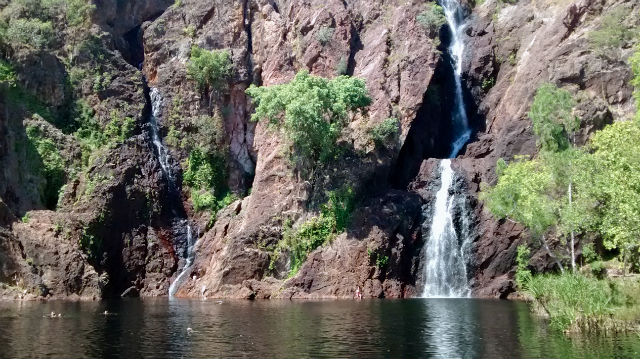
The park is also home to thousands of termite mounds, some decades old that have turned into termite cathedrals that tower up into the sky.
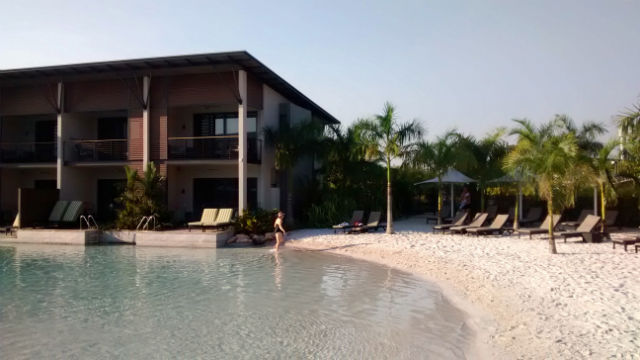
When you stay in Darwin I would recommend, Skycity the superior lagoon rooms extension to the hotel includes a man-made beach that you can swim in without worrying about any crocs.
Prices for a superior luxury lagoon room are $635 per room per night
The second leg of the triangle includes visits to Katherine; south of Darwin and about three hours drive from the city.
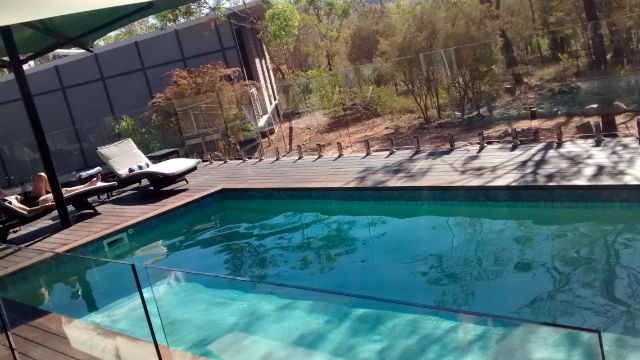
I would recommend that you stay at the Cicada Lodge which is a luxurious eco complex in Nitmiluk National Park. In the park is Katherine Gorge, which offers cruises across the gorges that are just breath-taking. If you have the time do their sunset gorge cruise dinner, which is something extra special.
Prices for Cicada Lodge are $701.00 per room per night.
Nearby is also TopDidj, which offers a fantastic Aboriginal cultural experience that I would highly recommend ($65 per person).
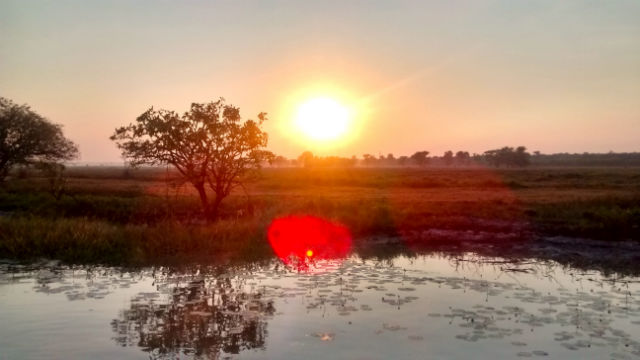
After you have explored this area it is time to move onto Kakadu National Park, the park has so much to offer but one of the absolute highlights is the Yellow Water Billabong Cruise. This is Kakadu’s most famous wetland, which is located at the end of Jim Jim Creek as the South Alligator River. They run a sunrise cruise each morning which takes you up the Billabong and it is something truly remarkable. Around one third of Australia’s bird species can be found in Kakadu, so it is a once in a lifetime experience seeing this unspoilt landscape come to life in the morning.
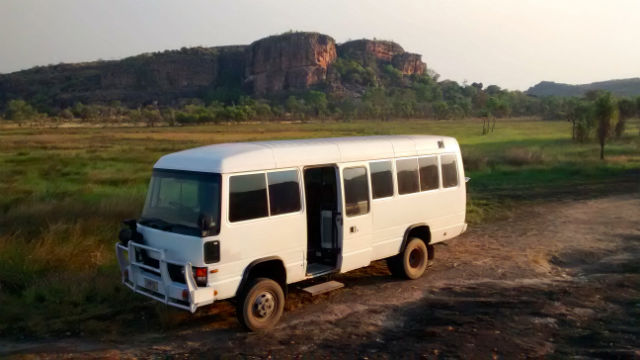
If you want to experience and learn more about Aboriginal culture then a visit to Arnhem Land is essential. This is special Aboriginal land that you need a permit to visit, but if you stay at Hawk Dreaming Wildreness Lodge you can enter this private land. You are picked up at the border store at Kakadu national park and driven into Arnhem Land. An overnight stay includes your accommodation (luxury tents), dinner on the evening, a tour of Aboriginal land, the opportunity to view rarely seen rock art and a beautiful sunset drinks reception.
Prices for Hawk Dreaming are $275 per person per night.
Bottom End – Alice Springs and Uluru-Kata Tjuta National Park
Getting from the Top End to the Bottom End of the Northern Territory is easiest done by flying and there are flights from Darwin to Alice Springs daily.
It is also important to note to not make the mistake of thinking that Alice Springs and Uluru are a stones throw from each other. Although they do look close on a map, they are about 4 hours drive from each other, so plan your logistics wisely.
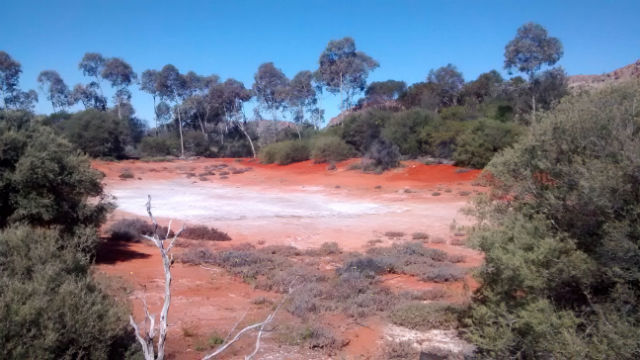
I recommend starting your trip in Alice Springs, whilst it is a small town it packs in a lot of quite interesting attractions. Start by visiting the Alice Springs Desert Park ($25 per person) where you will learn more about this unique desert environment. Alice is also home to the Royal Flying doctors which have a visitor centre. It is also home to the Alice Springs school of the air, which I found fascinating and finish off at the Telegraph Station which gives a snapshot into life in the 1870’s when the Telegraph was the means of communication across Australia.
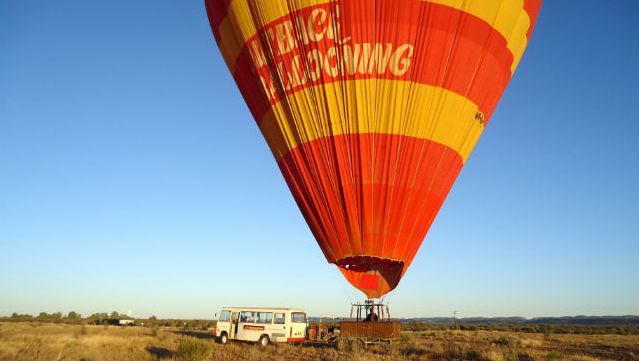
If you want a birds eye view of the area then I cannot recommend highly enough Outback Ballooning ($290 per person for 30mins).
Finish off your visit to Alice Springs by having dinner under the stars with Aboriginal Chef Bob Taylor. This experience is fabulous; you learn about Aboriginal culture and food and then eat a three course Aboriginal inspired dinner in the bush which is cooked on an open fire. ($160 per person)
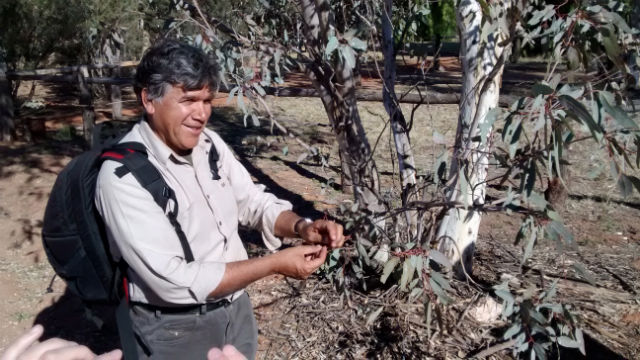
On the way to Uluru from Alice Spring you can make a detour and visit the Kings Canyon, which is in Watarrka National Park. This is Australia’s answer to the Grand Canyon and you can walk around the rim of the canyon in 3-4 hours. There are two options for accommodation, you can stay in the resort, however I would recommend staying at the Kings Canyon Wilderness Lodge it is luxurious.
Prices for the Wilderness Lodge are $268 per room per night
Making your way to Uluru from Kings Canyon is a further 2.5 hours driving approx, but it takes in some breathtaking scenery on the way. When you reach what you might mistake at Uluru as it isn’t Uluru! Carry on another 80km and you will hit Uluru Kata Tjuta National Park.
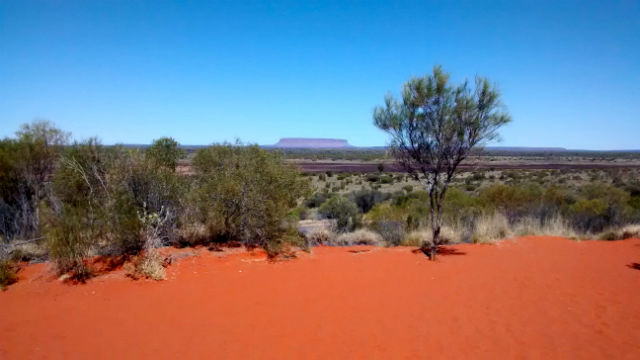
Uluru is everything you will expect it to be, its beautiful, spiritual and humbling all at once and you need a couple of days to explore the park properly. There is no accommodation within the park boundaries, you need to go to the Ayres Rock resort to find accommodation which is about a half hour drive from Uluru. Premium accommodation is found at the Sails in the Desert Hotel, which is a 5 star hotel with all the trimmings you expect.
Prices for Sails in the Desert are $540 per night in the dry season
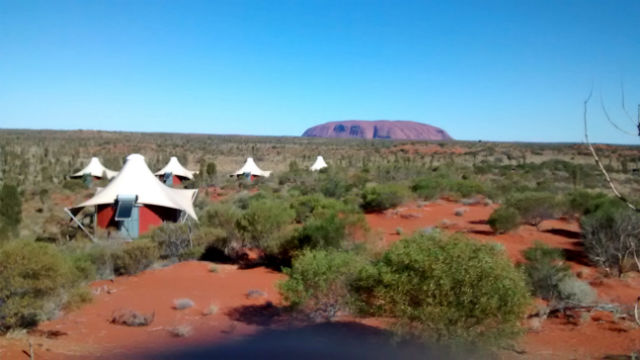
If you want to upgrade further then there really is only one place to go and that is Longitude 131. Uninterrupted views to Uluru from each room and spectacular food – I was in love with the place.
Prices start at $1200 per person per night
When you are in Uluru if you have a car it is easy to explore, but you will miss a lot of the detail about the park that you can only learn from someone who is knowledgeable in local history and culture so I would advise booking a tour. We used Seit Outback and they were excellent, (prices for tours start at $149 per person for a 5 hour tour).
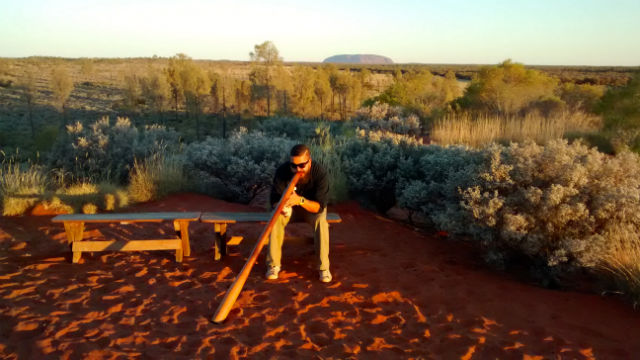
And to finish off your trip to Uluru I would recommend eating at Tali Wiru ($325 per person). This outdoor restaurant has views over to Uluru and is something extra special. It was one of the best dining experience of my life.

